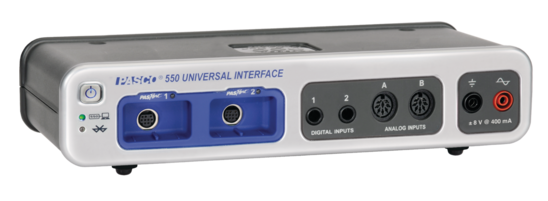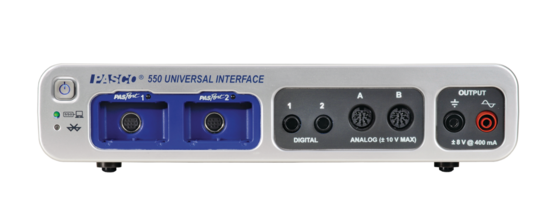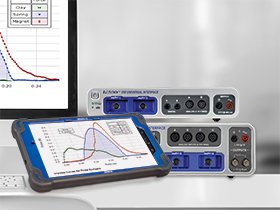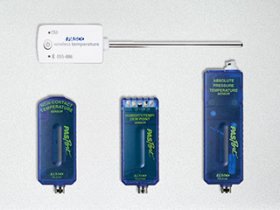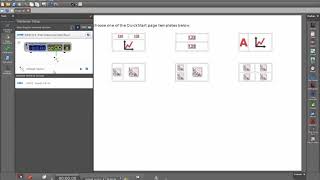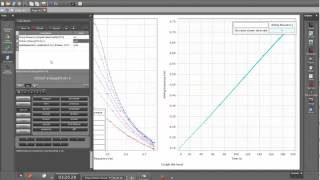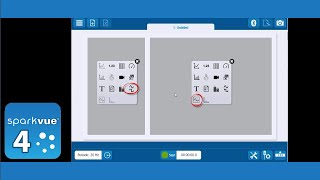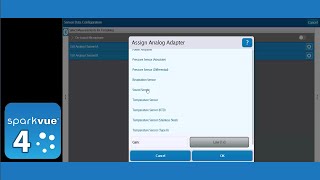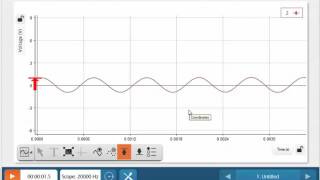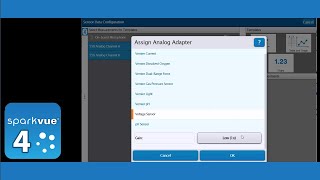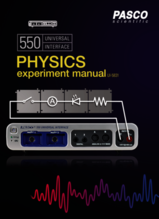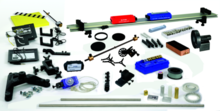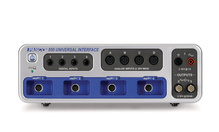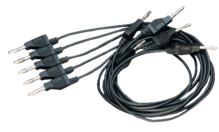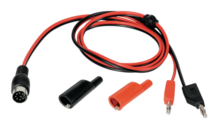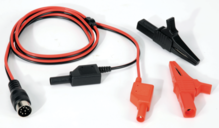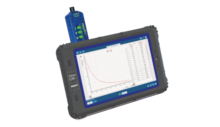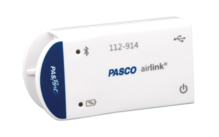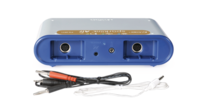The 550 is fast, powerful, and incredibly affordable. It offers half the ports and many of the same features as our 850 Interface in a smaller package.
See the Buying Guide for this item's required, recommended, and additional accessories.
Product Summary
The 550 Universal Interface is fast, powerful, and incredibly affordable. The cost-effective 550 offers half the ports and many of the same features as our 850 Universal Interface, including both Bluetooth and USB connectivity. The 550 Universal Interface includes two PASPORT sensor ports, two digital sensor ports, two analog sensor ports, and a built-in signal generator.
The 550’s two digital inputs are compatible with all ScienceWorkshop digital sensors, as well as timing devices, and photogates. The two analog ports connect with our analog ScienceWorkshop sensors and can support a 2.0 MHz max sampling rate and 1.22 mV resolution for voltage sensing.
The 550’s built-in signal generator powers motors, speakers, circuits, and many other devices. With PASCO Capstone software and the 550, you can control various DC and AC waveforms, without requiring any other technology. The 550 provides 8V at 400 mA, selectable voltage limits, built-in voltage and current measurements, and DC offset. Capstone software turns the 550 into a live oscilloscope that can display simultaneous traces.
Beyond having USB 2.0 connectivity, the 550 can also send data wirelessly to any Bluetooth enabled computer, iPad, or Android tablet using PASCO Capstone or SPARKvue software.
Features
- USB or Bluetooth Connection
- 3.2 W power amplifier
- 2.0 MHz max sampling rate
- 100 kHz signal generator with built-in Voltage and Current sensors
- Compatible with PASPORT, ScienceWorkshop, and Wireless Sensors
- 2 high-speed analog inputs
- 2 digital inputs for photogates and other timing sensors
- 2 PASPORT sensor inputs
- Can be used simultaneously with other PASPORT interfaces
- Uses Capstone Software or SPARKvue Software
Typical Experiments
- Newton’s Laws
- Conservation of Momentum
- Brewster’s Angle
- DC and AC Circuit Analysis
- Simple Harmonic Motion Oscillator/Driver
Product Specifications
| 2 High-Speed Analog Inputs |
|
| 2 Digital Inputs |
|
| 2 PASPORT Inputs |
|
| Signal Generator |
|
Data Collection Software
This product requires PASCO software for data collection and analysis. We recommend the following option(s). For more information on which is right for your classroom, see our Software Comparison: SPARKvue vs. Capstone »
Connectivity Options
This product can connect directly to your computer or device with the following technologies. No Interface required.
- Bluetooth Classic
- Universal Serial Bus (USB)
Buying Guide
| Requires One Of These | P/N | Price |
|---|---|---|
| PASCO Capstone Software | -- | -- |
| Recommended Accessories | P/N | Price |
|---|---|---|
| Universal 550 Physics Experiment Bundle | UI-5830 | -- |
| Universal 550 Physics Experiment Manual | UI-5831 | -- |
| Voltage Sensor (shrouded) | UI-5110 | -- |
Product Guides & Articles
PASCO Interfaces Comparison
We offer a variety of interfaces with diverse applications. Some of our products, such as the PASPORT and ScienceWorkshop sensors, require an interface, while others do not. This helpful page compares interface features, applications, and connectivity to help you decide which interface will serve you best.
Temperature Sensors
Our highly affordable temperature sensors provide unparalleled convenience during any experiment by eliminating the need for manually recorded temperature data. This page contains a comparison chart for PASCO temperature sensors to help you discover what’s possible when you use a modern thermometer.
Experiment Library
Perform the following experiments and more with the 550 Universal Interface.
Visit PASCO's Experiment Library to view more activities.
Induction: Magnet through a Coil
The purpose of this experiment is to examine Faraday’s Law of Induction. A magnet will be dropped through a coil and the voltage across the coil graphed as a function of time. The total integrated flux as the magnet moves into...
Rotational Kinetic Energy
This lab investigates the potential energies for a modified Atwood's Machine, where a disk has been added to the Rotary Motion Sensor pulley.
Introduction to Measurement
The purpose of this experiment is to measure the period of a simple pendulum and to use scientific methods to determine the relationships between the period of a pendulum and its length, its mass, and the amplitude of its motion.
Conservation of Angular Momentum
A non-rotating ring is dropped onto a rotating disk. The angular speed is measured immediately before the drop and after the ring stops sliding on the disk. The measurements are repeated with a non-rotating disk being dropped...
Conservation of Energy of a Simple Pendulum
The purpose of this experiment is to use measurements of the motion of a simple pendulum to calculate and compare the different types of energy present in the system.
Centripetal, Tangential, and Angular Acceleration
A rod rotates in a horizontal plane, and is made to slow steadily to a stop. This setup is used to explore the different types of acceleration involved in this motion: centripetal, tangential, and angular acceleration.
Polarization
Laser light is passed through two polarizers. As the second polarizer (the analyzer) is rotated by hand, the relative light intensity is recorded as a function of the angle between the axes of polarization of the two polarizers....
Newton’s Second Law for Rotation
Newton's Second Law for rotation: The resulting angular acceleration (α) of an object is directly proportional to the net torque (τ) on that object. The hanging mass applies a torque to the shaft of the Rotary Motion Sensor...
Electric Field Mapping
The purpose of this qualitative activity is to introduce the students to the concept of a field and to make the idea of the electric field more concrete by examining a number of examples. A number of rules about the electric field...
Series and Parallel Circuits
Series/Parallel circuits are reduced to an equivalent resistance and that resistance is verified by measuring the total current and total voltage. In a second stand-alone experiment, the behavior of lamps in series, parallel,...
Kirchhoff’s Circuit Laws
Kirchhoff’s Junction Rule and Loop Rule form the basis of all circuit analysis. Here we verify the laws for a resistive circuit.
Electrostatic Charges
Compare and contrast the results of three different methods of charging: (1) rubbing two objects together; (2) touching a charged object to a neutral one (charging by contact); and (3) grounding a neutral object while it is polarized...
Support Documents
| Manuals | ||
|---|---|---|
| 550 Universal Interface Reference Guide | English - 934.44 KB | |
| Knowledge Base | ||
| Connection between Bluetooth 2.0 devices and Mac OS Monterey or Ventura | Aug 29th, 2023 | |
| How do I connect a PASCO Bluetooth 2.0 wireless interface to a Windows computer? | Apr 14th, 2022 | |
| Square Wave & Positive Square Wave not working on 850 or 550 interface in Capstone 2.0 | Apr 14th, 2022 | |


